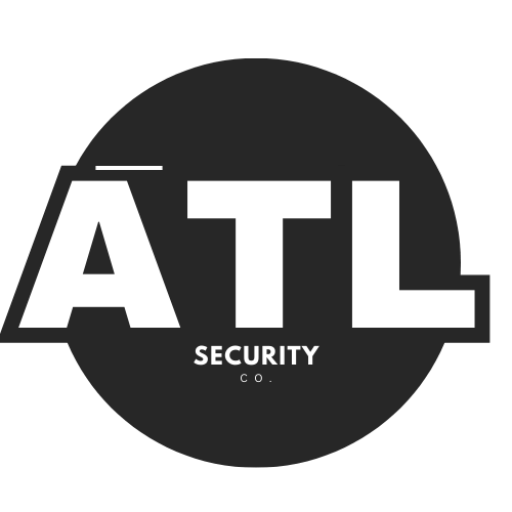Smart home devices have transformed the way we live, making our homes more convenient and efficient. These gadgets, which include smart speakers, thermostats, security cameras, and lighting systems, allow us to control various aspects of our homes with just a few taps on our smartphones or through voice commands. The appeal of smart home technology lies in its ability to simplify daily tasks, enhance security, and even save energy.
As more people embrace this technology, the market for smart home devices continues to grow rapidly. However, with the rise of smart home devices comes a new set of challenges. While these gadgets offer numerous benefits, they also introduce potential vulnerabilities.
Many users may not be fully aware of the risks associated with connecting their devices to the internet. As we become increasingly reliant on technology, understanding how to protect our smart homes from potential cyber threats is essential. This article will explore the risks of hacking smart home devices, common methods used by hackers, signs that your devices may have been compromised, and steps you can take to enhance your security.
Key Takeaways
- Smart home devices offer convenience and efficiency in managing household tasks and activities.
- Hacking of smart home devices can lead to privacy breaches, unauthorized access, and potential safety risks.
- Common methods of hacking smart home devices include exploiting weak passwords, unsecured Wi-Fi networks, and outdated software.
- Signs of a hacked smart home device may include unexplained changes in settings, unusual behavior, and unauthorized access.
- To protect smart home devices from hacking, users should regularly update software, use strong passwords, and implement additional security measures such as two-factor authentication and network monitoring.
Potential Risks of Hacking
Hacking smart home devices can lead to serious consequences.
One of the most significant risks is the invasion of privacy.
Many smart devices collect personal data, such as your daily routines, preferences, and even video footage from security cameras.
If a hacker gains access to this information, they can misuse it in various ways, including identity theft or stalking. The thought of someone watching your every move from a distance is unsettling and highlights the importance of securing these devices. Another risk is the potential for unauthorized control over your home.
Imagine a hacker taking control of your smart locks or thermostat. They could lock you out of your own home or manipulate your heating and cooling systems, leading to discomfort or even damage. In extreme cases, hackers can use compromised devices as entry points to access other connected systems in your home, creating a domino effect that can compromise your entire network.
Understanding these risks is crucial for anyone using smart home technology.
Common Methods of Hacking Smart Home Devices
Hackers employ various methods to exploit vulnerabilities in smart home devices. One common technique is phishing, where attackers trick users into revealing their login credentials through fake emails or websites. For instance, you might receive an email that appears to be from a legitimate company asking you to reset your password.
If you fall for this trap, hackers can gain access to your accounts and control your devices. Another method is exploiting weak passwords. Many users choose simple or default passwords for their devices, making it easy for hackers to guess them.
Once a hacker gains access to a device, they can manipulate it or use it as a gateway to infiltrate other connected systems in your home. Additionally, some hackers take advantage of outdated software that may have known vulnerabilities. If manufacturers do not regularly update their devices, they leave users exposed to potential attacks.
Signs that Your Smart Home Device Has Been Hacked
Recognizing the signs of a hacked smart home device is crucial for taking action before further damage occurs.
One common indicator is unusual behavior from your devices.
For example, if your smart thermostat suddenly changes settings without your input or if your security camera starts recording at odd times, it could be a sign that someone else is controlling it.
These anomalies should raise red flags and prompt you to investigate further. Another sign is unexpected notifications or alerts. If you receive alerts about unauthorized access attempts or strange logins from unfamiliar locations, it’s essential to take these warnings seriously.
Additionally, if you notice that your device is responding to commands you did not issue or if it becomes unresponsive altogether, these could be signs of hacking. Being vigilant and aware of these signs can help you act quickly to secure your devices.
Steps to Protect Your Smart Home Devices from Hacking
Taking proactive steps to protect your smart home devices is essential for maintaining security. First and foremost, always change the default passwords on your devices. Create strong passwords that combine letters, numbers, and special characters.
Avoid using easily guessable information like birthdays or names. A strong password acts as the first line of defense against unauthorized access. Another important step is to secure your Wi-Fi network.
Ensure that your router has a strong password and consider enabling network encryption. This makes it more difficult for hackers to gain access to your network and connected devices. Additionally, consider setting up a separate network for your smart devices.
This way, even if one device is compromised, it won’t give hackers access to your main network and personal information.
Importance of Regular Software Updates
Regular software updates are vital for keeping your smart home devices secure. Manufacturers often release updates to fix vulnerabilities and improve functionality. By neglecting these updates, you leave your devices exposed to potential threats that hackers can exploit.
Make it a habit to check for updates regularly and enable automatic updates whenever possible. In addition to improving security, software updates can enhance the performance of your devices. They may introduce new features or improve existing ones, making your smart home experience even better.
Staying up-to-date with software ensures that you are using the latest security measures available and helps protect against emerging threats.
Additional Security Measures for Smart Home Devices
Beyond changing passwords and updating software, there are additional security measures you can take to protect your smart home devices. One effective strategy is enabling two-factor authentication (2FA) whenever possible. This adds an extra layer of security by requiring a second form of verification in addition to your password.
Even if a hacker manages to obtain your password, they would still need access to the second factor to gain entry. Another measure is to regularly review the permissions granted to your smart devices and apps. Some applications may request access to more data than necessary for their functionality.
By limiting permissions, you reduce the amount of personal information that could be exposed in case of a breach. Additionally, consider using a virtual private network (VPN) when accessing your smart home devices remotely. A VPN encrypts your internet connection, making it harder for hackers to intercept data.
Conclusion and Final Thoughts
As smart home technology continues to evolve, so do the risks associated with it. Understanding the potential dangers of hacking and taking proactive steps to secure your devices is essential for protecting your privacy and safety. By recognizing common hacking methods and signs of compromise, you can act quickly if something seems off.
Implementing strong passwords, securing your Wi-Fi network, and keeping software updated are fundamental steps in safeguarding your smart home environment. Additionally, utilizing two-factor authentication and reviewing app permissions can further enhance your security measures. In this digital age, being informed and vigilant is key to enjoying the benefits of smart home technology while minimizing risks.
Embrace the convenience of smart homes but do so with caution and awareness of potential threats.
FAQs
What are smart home devices?
Smart home devices are electronic devices that are connected to the internet and can be controlled remotely. These devices include smart thermostats, security cameras, door locks, and lighting systems.
How can smart home devices be hacked?
Smart home devices can be hacked through various methods such as weak passwords, unsecured Wi-Fi networks, and outdated software. Hackers can also exploit vulnerabilities in the devices themselves to gain unauthorized access.
What are the risks of having hacked smart home devices?
Hacked smart home devices can lead to privacy breaches, unauthorized access to personal information, and even physical security risks if the devices control door locks or security systems.
How can I protect myself from smart home device hacks?
To protect yourself from smart home device hacks, you should use strong, unique passwords for each device, regularly update the device’s software, and secure your Wi-Fi network with a strong password and encryption. Additionally, consider using a separate network for your smart home devices and regularly monitor for any suspicious activity.





